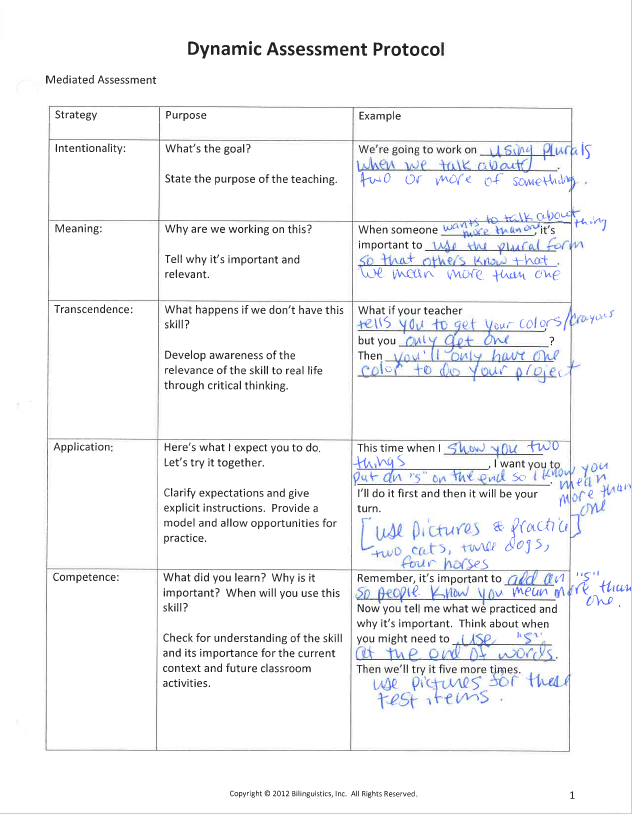In our multicultural world, we often have to rely on interpreters to help us communicate with others. Last month I talked about how we can work with our interpreters to analyze language samples during a speech-language evaluation. This month, we’ll talk about how to do a dynamic assessment with the help of an interpreter.
Once your initial testing is complete,…
Okay, so you’ve done your formal and informal measures and you’ve noticed that your student struggles with plural forms. Now it’s time to do your dynamic assessment to see if your student can pick it up easily or not.
5 Easy Steps to Implementing Dynamic Assessment with an Interpreter
Step 1: Grab your Dynamic Assessment Protocol from the Bilinguistics Resource Library.
Step 2: Take a few minutes to fill it in with the goal you are going to target. (This is a great time for the interpreter to gather a conversational sample from the student).
It will look something like this:

Step 3: Let your interpreter review it and ask you any questions about it.
Step 4: Observe and take notes as the interpreter goes through the dynamic assessment.
Step 5: Debrief with your interpreter so you can get a sense of the student’s change and the interpreter’s effort during the process.
Quick improvement?
Remember, quick improvement with minimal examiner effort indicates intervention may not be needed.
For more information on Dynamic Assessment, check out the ASHA website.
You can also take a course to hone your skills and earn ASHA CEUs.


